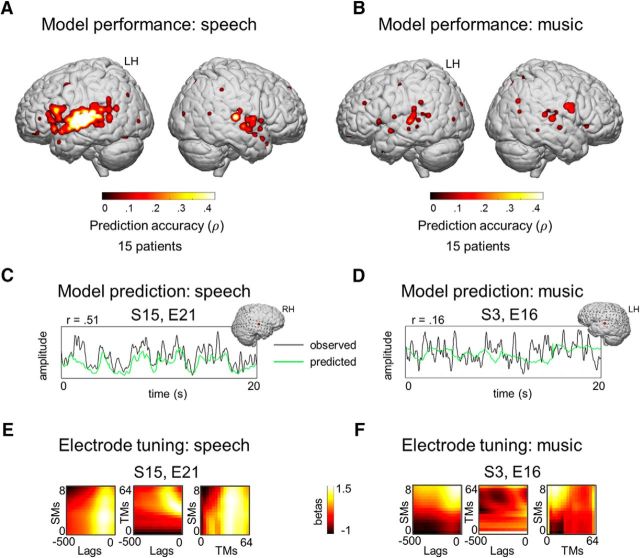Figure 4.
Encoding model performance in ECoG. A linear encoding model was trained on low-level SM–TM features to model neural responses in ECoG evoked by speech and music. The model was trained per individual electrode. The model performance was quantified in terms of prediction accuracy: the held-out neural responses (test set) were correlated to the corresponding time courses predicted by the model trained on low-level SM–TM features of the audio. The model performance assessment was performed separately for speech and music. Spearman correlation scores were used. The presented maps were thresholded at p < 0.001, Bonferroni corrected for the number of electrodes (1283 electrodes over 15 patients). For the visualization purposes, a 2D Gaussian kernel (FWHM = 10 mm) was applied to the coordinate on the brain surface corresponding to the center of the electrode, so that the prediction accuracy value obtained by the model faded out from the center of the electrode toward its borders. The results are shown on a standard MNI brain. Individual electrode locations were normalized to the MNI space using patient-specific affine transformation matrices obtained with SPM8. A, Prediction accuracy maps for modeling neural responses to speech (130 electrodes). B, Prediction accuracy maps for modeling neural responses to music (47 electrodes). C, Example of a neural response predicted by the model (green) plotted against the observed response (black) in speech. D, Example of predicted and observed neural responses in music. E and F are examples of electrode feature tuning profiles (E shows electrode from C, F shows electrode from D). Non z-scored regression coefficients were used.

